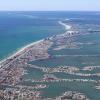Fuel tank repair
-
Members Online
- acekng1
- 0TreeLemur
- tankles
- FlyingDude
- Elliot Ness
- TCC
- gtprend
- Rmfriday
- dennis riz
- 201er
- AH-1 Cobra Pilot
- Jblanton
- jetdriven
- TheAv8r
- larryb
- EricJ
- Old Chub
- mluvara
- Schllc
- Florian Guthardt
- Ragsf15e
- Danb
- Skyland
- Raptortail
- tcal780
- IvanP
- Dwb62
- PT20J
- slowflyin
- Bolter
- 1980Mooney
- TaildraggerPilot
- Boboli
- Sabremech
- jamesyql
- neilpilot
- raymondscott0321
- Taz
- UteM20F


Recommended Posts
Join the conversation
You can post now and register later. If you have an account, sign in now to post with your account.